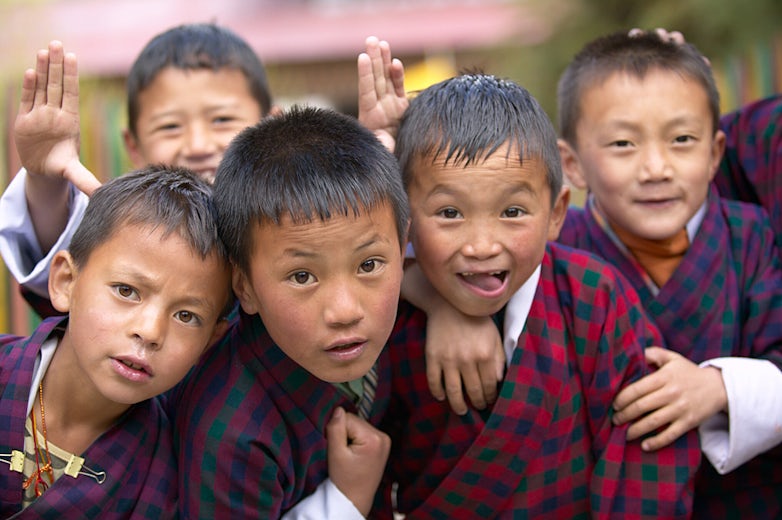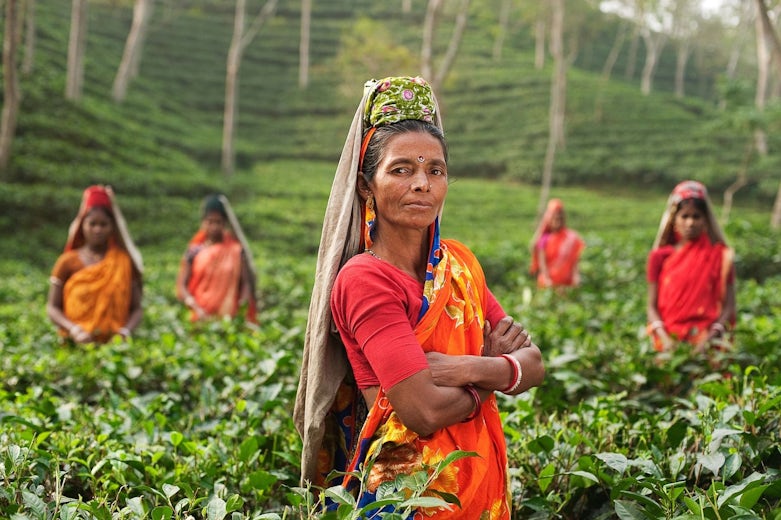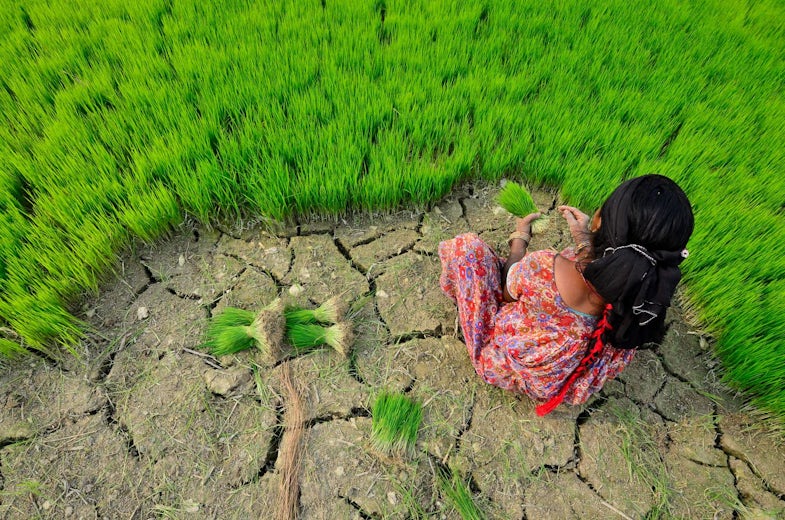Additional Resources on Malaria Elimination for All

Additional Resources
APLMA and APMEN have compiled a list of resources on malaria and cross-cutting policies from several partners, for your reference and consideration.
On This Page:
- Additional Resources for Malaria and Universal Health Coverage
- Additional Resources for Malaria and Social Inclusion
- Additional Resources for Malaria and Climate Change
- Additional Resources for Global Health Security

Additional Resources for Malaria and Universal Health Coverage
Tools and Planning Resources
World Health Organization: UHC Compendium: A toolbox for countries to build packages of essential services, the Compendium offers country decision-makers a database of over 3,500 health actions across all health areas to adapt to their needs and expand access to better health for all. This tool supports countries in tailoring their health services to the needs of their people, to achieve and improve UHC.
World Health Organization: Triple Billion Dashboard designed to measuring the impact of activities towards improving health and promoting a safer world, by protecting the more vulnerable along the 13th General Programme of Work 2019-2023. The targets include 1 billion more to benefit from UHC, 1 billion with better protection from health emergencies and 1 billion more enjoying better health and well-being.
WHO WPRO and ADB: Regional Monitoring Framework for UHC.
UHC2030: UHC Data Portal showing snapshot of the state of individual country UHC commitments and an overview of global progress to facilitate cross-country comparisons. Toolkit on health budget literacy, advocacy and accountability for UHC.
UCSF Malaria Elimination Initiative (MEI) SUSTAIN Tool: The Sustainability and Transition Readiness Assessment Tool for Malaria is designed as a multi-stakeholder consultative process to assess program strengths and risks as they relate to sustainability, and prioritize strategies and actions for the transition period from donor financing. SUSTAIN takes a holistic approach to assessing transition readiness, by evaluating sustainability and transition vulnerabilities in each of the core domains of the malaria response, including epidemiological surveillance and response, vector control, case management, and information systems.
Technical Assistance
P4H: Sign up to the P4H Social Health Protection Network The Global Network for Health Financing and Financial Protection:
WHO Universal Health Coverage Partnership: A Handbook for Strategizing national health in the 21st Century. Designed to provide up-to-date and practical guidance on national health planning and strategizing for health.
UCSF MEI Sustainability Support: The MEI has developed a Sustainability Model to support countries in securing a resilient and sustainable malaria response. A health system approach, including planning for integration and aligning incentives between a country’s malaria program and broader health reforms, is core to the Sustainability Model at both the national and subnational levels. The MEI’s Sustainability Model includes two complementary, country-level approaches—both implemented in partnership with national malaria programs, national and local governments, and their partners:
- Donor Transition Support: The MEI specializes in supporting country sustainability and transition by generating actionable analyses and facilitating strategic planning and implementation with partners at the global and country levels. At the country level, the MEI accompanies malaria programs to assess transition-related priorities, risks, and opportunities; develop a plan of action to address sustainability and transition priorities; and implement the sustainability and transition plan, such as evidence-based guidelines to integrate vertical malaria programs into general health systems
- Malaria Budget Advocacy Support: The MEI has developed a catalytic program of support—Malaria Budget Advocacy (MBA). MEI’s MBA approach provides country support in strategy development, capacity building, and implementation to strengthen domestic political and financial support for malaria, enabling an effective and sustainable country-led response, through sub-national advocacy and leadership.
Advocacy Across Sectors
APLMA: A regional initiative established under the East Asia Summit, now endorsed by 23 Heads of Government. APLMA drives implementation of the “APLMA Leaders Malaria Elimination Roadmap” to expedite elimination by 2030.
Research and Evidence
UHC 2030 International Health Partnership
- (May 2020) Living with COVID-19: Time to get our act together on health emergencies and UHC.
- (2020) State of commitment to Universal Health Coverage: Synthesis.
Roll Back Malaria
- (2020) Achieving Universal Health Coverage and a Malaria-free World: Mutually Reinforcing Goals
Malaria Consortium
- (2016) Community-based primary healthcare: the key to unlocking health for all.
- (2018) Domestic expenditure on health service delivery in low-income settings.
Capacity Building and Peer Learning
APMEN: A regional platform for malaria elimination in the Asia Pacific. It facilitates knowledge exchange and peer-to-peer support between different partners and help address gaps in knowledge. APMEN will leverage its Working Groups to advance discussions on climate change and malaria.
Joint Learning Network, Universal Health Coverage: An innovative, country-driven network of practitioners and policymakers from around the globe who co-develop global knowledge products that help bridge the gap between theory and practice to extend health coverage to more than 3 billion people.
Malaria Consortium: Malaria Consortium approaches capacity building and development from a holistic perspective, designing interventions that address institutional as well as individual performance factors. We aim to achieve local acquisition of skills and capacity to be sustained and embedded to existing systems in the countries. We work in close partnerships with communities, community health workers, public and private sectors and our counterparts in countries. We rely on participatory processes that facilitate effective human and institutional capacity development, peer learning and quality assurance. We leverage technology and digital solutions to make capacity building more effective, and during the COVID-19 pandemic we deployed innovative capacity building solutions including virtual learning platforms, self-paced learning mobile applications, digital supervision and mentoring tools.
UHC2030: Platform to convene and build connections through joint high-level events or gathering of experts and contributes advocacy, tools, guidance, knowledge and learning.

Additional Resources for Malaria and Social Inclusion
Tools and Planning Resources
WHO and PMNCH have developed ‘A Policy Guide for Implementing Essential Interventions for Reproductive, Maternal, Newborn and Child Health (RMNCH)’. This guide presents key health-systems-related policies (including for malaria during pregnancy and infancy and childhood) and multisectoral policies that support the delivery of proven interventions to women and children.
RBM presents a Multisectoral Framework for Malaria that promotes a coordinated multi-pronged effort, one which harnesses expertise across a range of sectors and institutions. It counts gender as a major determinant of malaria and advancing gender equality as essential to countering malaria.
RBM and the Global Fund designed the Malaria Matchbox: an equity assessment tool guiding public health professionals in identifying and responding to risk factors and barriers to equitable access to care.
Bill and Melinda Gates Foundation had published a ‘Gender and Malaria Evidence Review’ report which synthesizes the current state of research and knowledge about the ways in which gender mediates the adoption of preventive technologies and behaviours and access to treatment, as well as the potential for gender intentional and transformative approaches to research, implementation, product development, and advocacy.
UNDP has developed a CHECKLIST for ‘Integrating Gender into the Processes and Mechanisms of the Global Fund to Fight AIDS, Tuberculosis and Malaria’.
Medicines for Malaria Venture : MMV’s MiMBa strategy aims to raise the standard of care for pregnant women and their new-borns affected by malaria.
Research and Evidence
World Health Organization, Department of Gender, Women and Health (GWH) Family and Community Health (FCH): Gender, Health and Malaria
USAID and MEASURE Evaluation (UNC-Chapel Hill) have developed ‘The Importance of Gender in Malaria Data’ brief that explores the importance of gender in monitoring and evaluation activities and suggests indicators to reveal and explain gender gaps in malaria outcomes.
The Global Fund ‘Malaria, Gender and Human Rights’ technical brief gives practical assistance to country coordinating mechanisms (CCMs), program managers, partners, advocates and others concerned with Global Fund-supported programs in ensuring that malaria proposals and programs include measures to remove human rights and gender-related barriers to malaria prevention and treatment services.
UNDP discussion paper on ‘Gender and Malaria’ makes the investment case for programming that addresses the specific vulnerabilities and needs of both males and females who are affected by or are at risk of malaria.
Capacity Building and Peer Learning
APMEN: A regional platform for malaria elimination in the Asia Pacific. It facilitates knowledge exchange and peer-to-peer support between different partners and help address gaps in knowledge. APMEN is leveraging its Working Groups to advance discussions on gender vulnerabilities and malaria.

Additional Resources for Malaria and Climate Change
Tools and Planning Resources
World Health Organization: Launched a “Protecting health from climate change: vulnerability and adaptation assessment” tool. It provides guidance on conducting an assessment of current and future vulnerability to the health risks of climate change considering the multiple determinants of climate-sensitive health outcomes.
Malaria No More: Launched a new initiative - “Forecasting Healthy Futures”. This will develop weather data-informed strategies and policies to help governments and partners better time and target effective health interventions.
Technical Assistance
World Health Organization/ World Meteorological Organization: A joint office has been set up to promote the coordinated development and use of climate services to improve public health. The Joint Office will help to achieve the goals of the “Global Framework for Climate services”.
IPCC: A United Nations body to explain the science related to climate change. IPCC has developed a report on how climate change impacts human health.
Advocacy and Cross-sectoral Linkages
APLMA: A regional initiative established under the East Asia Summit, now endorsed by 23 Heads of Government. It drives implementation of the APLMA Leaders Malaria Elimination Roadmap to expedite elimination by 2030.
RBM Partnership to End Malaria: A global platform for coordinated action against malaria. It mobilizes action and resources and forges consensus among partners. RBM has called for “a joint approach between public health and environment professionals” to deal with the impact of a changing climate on health.
Research and Evidence
Malaria Consortium: It specialises in the prevention, control and treatment of malaria and other communicable diseases among vulnerable populations, with a special focus on Africa and Asia. One focus area is impact of climate change on vector control.
Special Programme for Research and Training in Tropical Diseases (TDR): TDR, is a global programme of scientific collaboration that helps facilitate, support and influence efforts to combat diseases of poverty. A key focus area for TDR is investigating the effects of environmental and climate change on major vectors and vector-borne diseases.
Capacity Building and Peer Learning
APMEN: A regional platform for malaria elimination in the Asia Pacific. It facilitates knowledge exchange and peer-to-peer support between different partners and help address gaps in knowledge. APMEN will leverage its Working Groups to advance discussions on climate change and malaria.

Additional Resources for Global Health Security
Tools and Planning Resources
Nuclear Threat Initiative, Johns Hopkins Center for Health Security and Economist Impact: Global Health Security Index
A tool for assessment and benchmarking of health security capabilities across 195 countries. It looks at health security under 6 categories such as prevention, detection, risk of threats, norms in place to respond to health threats, etc. There are a set of indicators, sub indicators and questions which can be used to assess the progress on each category and to develop policies which help develop better health security capabilities.
World Health Organization: Health Systems Resilience Toolkit
A consolidated technical resource to help operationalize national and sub-national policy and planning of operations and delivery systems and establishing monitoring and evaluation mechanisms.
The Commonwealth: Health Protection Policy Toolkit
A practical resource which puts together various components needed to design a health protection policy such as governance, capacity, knowledge, research, innovation, etc. and gives a planning template to policy makers and planners who are working towards strengthening health protection at various levels.
World Health Organization: Strategic Toolkit for Assessing Risks
An easy-to-use toolkit which helps countries to conduct a strategic and evidence-based assessment of public health risks for planning and prioritization of health emergency preparedness and disaster risk management activities
Asian Development Bank: Practical Actions to Operationalize the One Health Approach
This document provides examples from the region as well as further guidance on how to operationalize a One Health Approach in Asia
Technical Assistance
World Health Organization: A Country Implementation Guide for National Action Plan for Health Security
The NAPHS framework is a flexible approach to help countries plan and implement priority actions to attain health security. It assists countries to align and integrate their own national health strategic plan with relevant national sectoral plans to facilitate better implementation of the NAPHS.
US Department of Health and Human Services: National Strategy for a Resilient Public Health Supply Chain
This strategy outlines the U.S. Government’s vision to protect the health and security of Americans by ensuring a supply chain for PPE, medical devices, medicines, and other public health supplies that is resilient against disruptions from pandemics and other biological threats.
World Health Organization: WHO Health Emergencies Programme Learning Strategy
A learning strategy to build requisite capacities and capabilities in the workforce which responds to disease outbreaks, epidemics, pandemics and other health emergencies in a manner that places country impact at the centre
World Health Organization: Handbook for Integrated Vector Management
This handbook presents an operational framework to guide managers and those implementing vector-borne disease control programmes in designing more efficient, cost-effective systems.
World Health Organization: Malaria- A manual for community health workers
The manual contains the basic information and guidance required for community health workers for the recognition of malaria, its treatment, and identification of cases to be referred: recording and reporting; promotion of community awareness about malaria; and promotion of relevant and feasible preventive activities.
Advocacy Across Sectors
APLMA: A regional initiative established under the East Asia Summit, now endorsed by 23 Heads of Government. APLMA drives implementation of the “APLMA Leaders Malaria Elimination Roadmap” to expedite elimination by 2030.
Global Health Security Agenda
The Global Health Security Agenda (GHSA) was launched in February 2014 in response to the global threat that infectious diseases constitute in our increasingly interconnected world. It is a repository of resources and action packages which help policy makers design solutions on various issues of health security concerns such as biosecurity, antimicrobial resistance, zoonotic diseases, etc.


